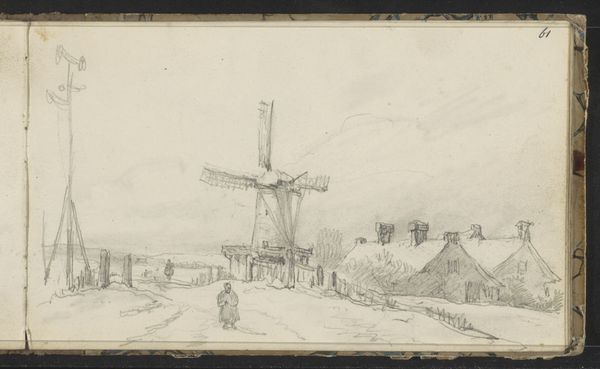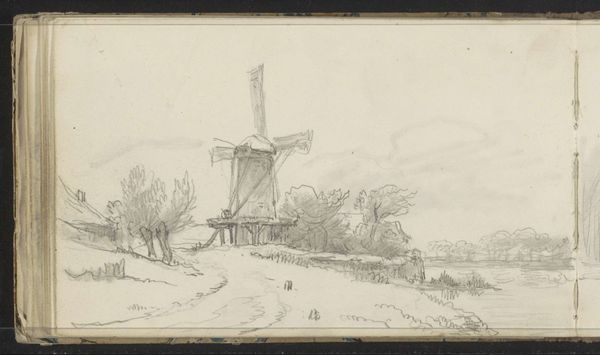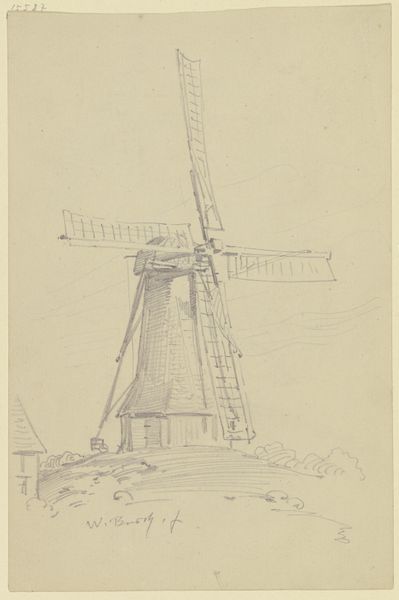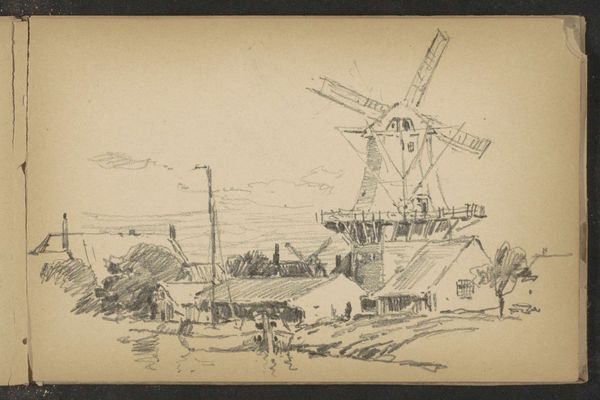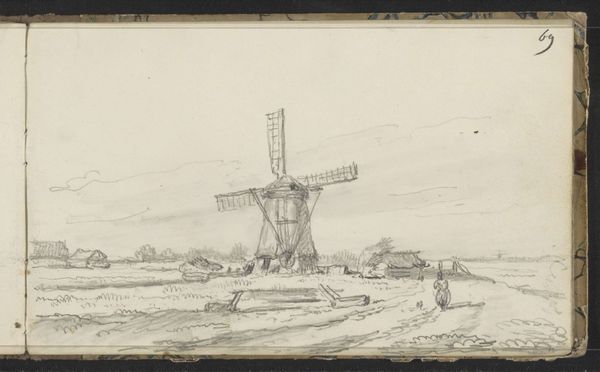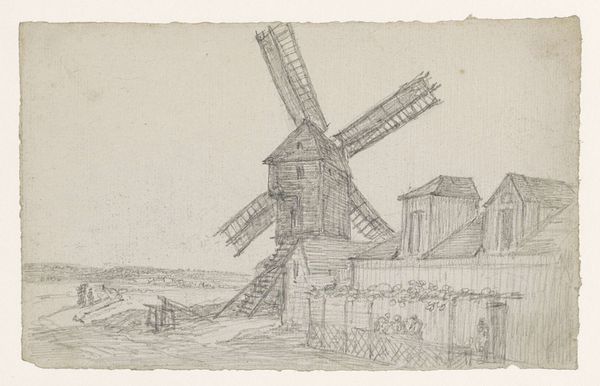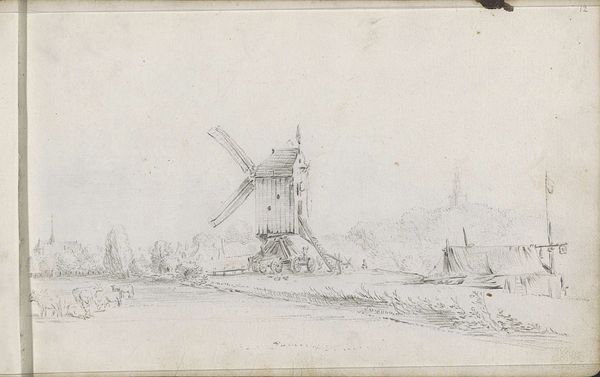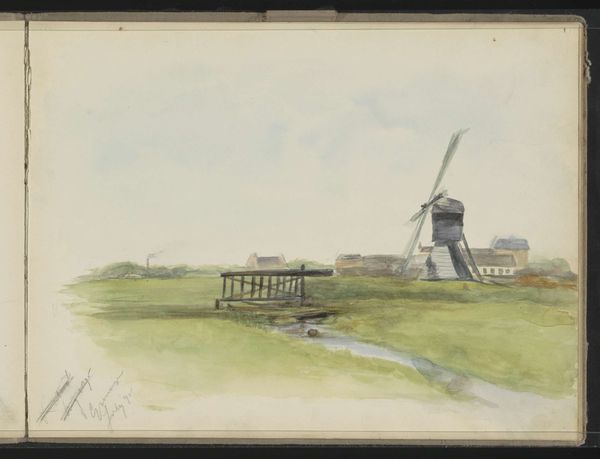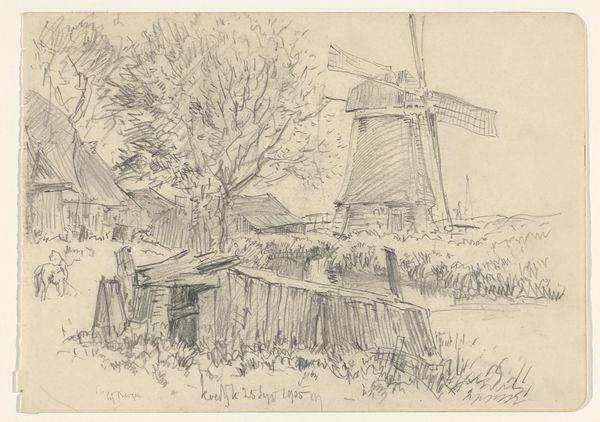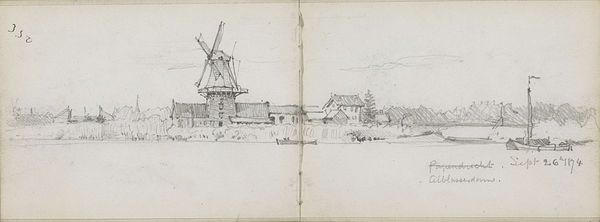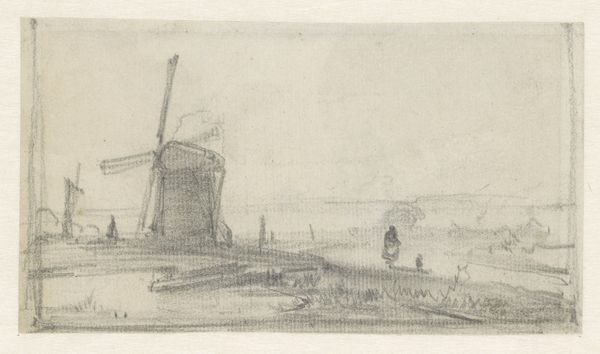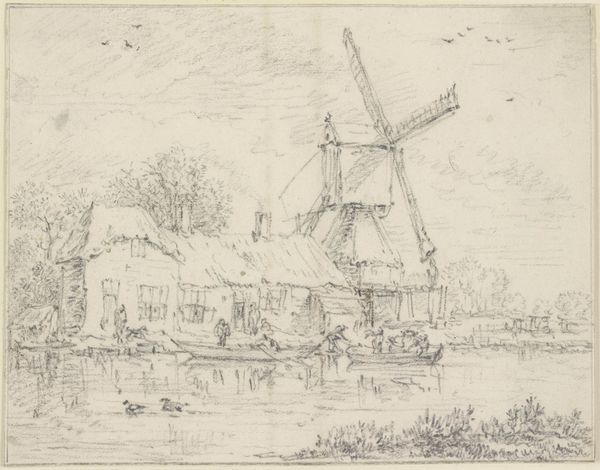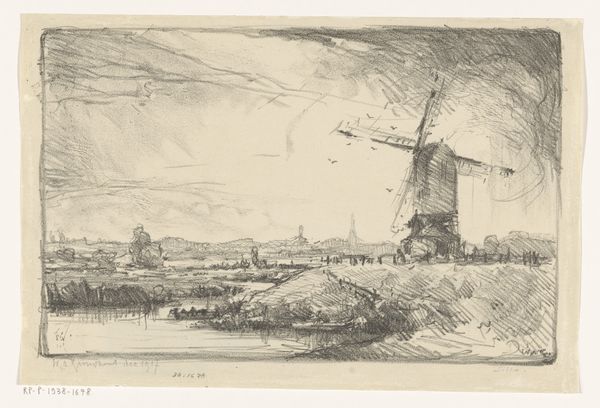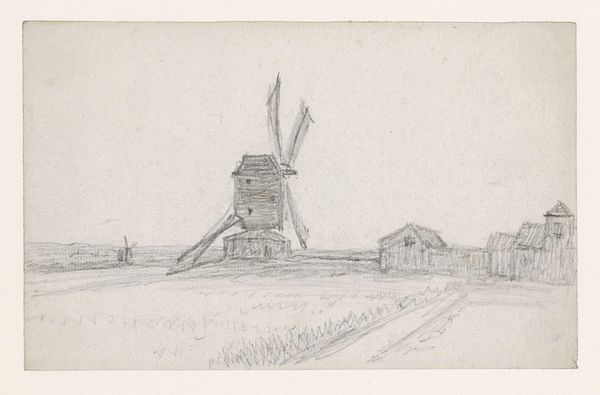
drawing, pencil
#
drawing
#
dutch-golden-age
#
landscape
#
pencil
#
realism
Copyright: Rijks Museum: Open Domain
Editor: This is a pencil drawing titled "Molen aan een vaart," or "Mill on a Canal," created around 1803-1818 by Arnoldus Johannes Eymer. The sketch has such a serene, almost idyllic quality to it. How do you interpret this work? Curator: It's easy to see that peacefulness at first glance. But I think it's important to consider the Netherlands during that time. While seemingly a simple landscape, mills were integral to the Dutch economy and its burgeoning national identity. Canals and windmills harnessed power, representing the Dutch mastery over water, and this arguably contributed to a national sense of pride, yet, this mastery of the land was also bound to exploit its human workforce. Editor: That's a great point; it shifts the way I see it. The drawing feels less like a purely observational landscape now. The mill embodies a period of great national change, both positive and maybe also exploitative? Curator: Precisely. Consider who had access to the wealth generated by these mills and waterways, and who perhaps did not. Landscapes often naturalize power structures. Where is the labour in the image? And to what extent do the formal, stylistic choices either highlight or obscure these sociopolitical realities? Editor: So, seeing it within that context asks us to consider what’s not immediately visible: the human cost behind that progress? It makes me question that initial impression of serenity. Curator: Exactly. And remember, art rarely exists in a vacuum. By considering Eymer's drawing alongside the social and economic history of the Netherlands, we gain a richer understanding of its complexities, challenging those superficial aesthetic qualities. Editor: This is really helpful, and quite thought-provoking, because I will never see a simple landscape the same way again! Curator: And hopefully begin to recognize who may benefit from the obscuring of political realities through appealing visuals.
Comments
No comments
Be the first to comment and join the conversation on the ultimate creative platform.
